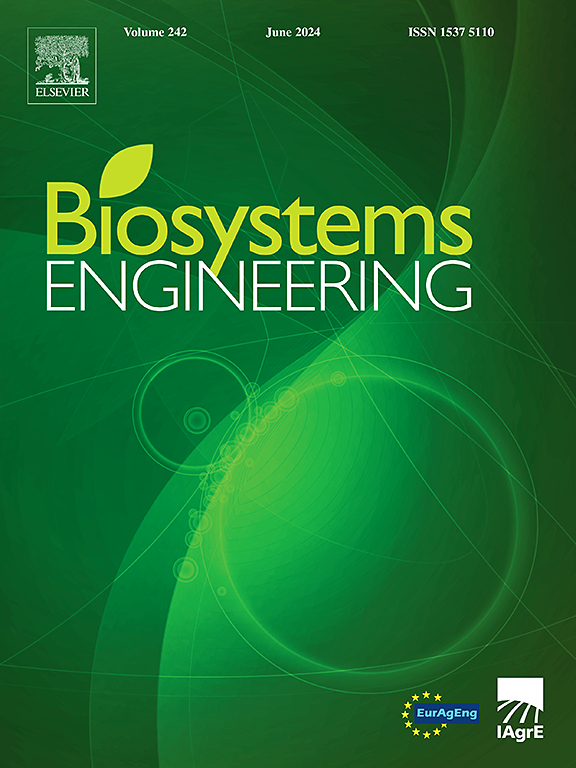联合收割机液压变直径脱粒鼓控制系统的研制。第一部分:自适应监控方法
IF 4.4
1区 农林科学
Q1 AGRICULTURAL ENGINEERING
引用次数: 0
摘要
传统谷物联合收割机不能根据进料速率的变化调整脱粒间隙,导致脱粒损失大。前人研究开发了一种液压变径脱粒滚筒,通过改变滚筒直径来调节脱粒间隙。然而,在这些系统中,脱粒鼓中空液压缸杆腔内外的油压受进料速率和脱粒间隙的影响。自变量(进料速率和脱粒间隙)与响应值(脱粒性能和油压)之间的相关模型尚未研究。因此,本研究采用中心复合可旋转设计(CCRD)试验方法,研究自变量与响应值之间的关系。结果表明:在不同进料速率对应的最佳脱粒间隙下,杆腔内油压变化阈值约为0.64 ~ 0.78 MPa,变化幅度为0.14 MPa;为此,提出了一种基于恒定油压的自适应监测方法,通过调节脱粒间隙,使杆腔内油压保持在阈值范围内。这使不同进料速率下的夹带损失率最小。本文章由计算机程序翻译,如有差异,请以英文原文为准。
Development of a hydraulic variable-diameter threshing drum control system for combine harvester part I: Adaptive monitoring method
Traditional cereal combine harvesters cannot adjust the threshing gap according to the change of feeding rate, leading to large threshing losses. Previous research has developed a hydraulic variable-diameter threshing drum, which adjusts the threshing gap by changing the drum diameter. However, the oil pressure within and without the rod cavity of the hollow hydraulic cylinder for the threshing drum is affected by both the feeding rate and threshing gap in these systems. The correlation model between the independent variables (feeding rate and threshing gap) and the response values (threshing performance and oil pressure) has not yet been studied. Therefore, in this study, the relationship between the independent variables and the response values is studied by using the test method of central composite rotatable design (CCRD). The results showed that under the optimal threshing gap corresponding to different feeding rates, the threshold of oil pressure change within rod cavity was approximately 0.64–0.78 MPa, with a variation of <0.14 MPa. Therefore, an adaptive monitoring method based on constant oil pressure is proposed, which could keep the oil pressure within the rod cavity in the threshold range by adjusting the threshing gap. This minimised the entrainment loss rate under different feeding rates.
求助全文
通过发布文献求助,成功后即可免费获取论文全文。
去求助
来源期刊

Biosystems Engineering
农林科学-农业工程
CiteScore
10.60
自引率
7.80%
发文量
239
审稿时长
53 days
期刊介绍:
Biosystems Engineering publishes research in engineering and the physical sciences that represent advances in understanding or modelling of the performance of biological systems for sustainable developments in land use and the environment, agriculture and amenity, bioproduction processes and the food chain. The subject matter of the journal reflects the wide range and interdisciplinary nature of research in engineering for biological systems.
 求助内容:
求助内容: 应助结果提醒方式:
应助结果提醒方式:


